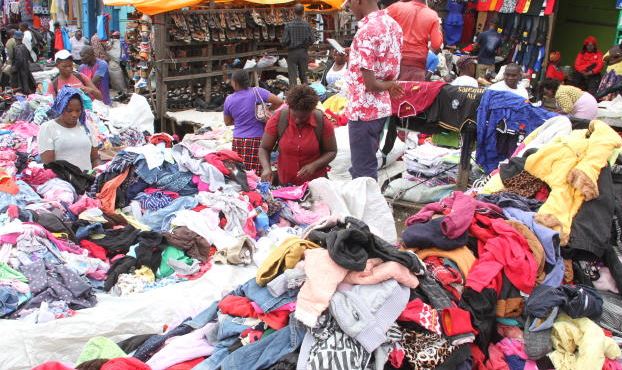
Antony Sende is a man of few words. This is unexpected of a trader in Gikomba market.
I find him seated with his back on the makeshift wall separating his stall and that of his neighbour. He stares at the jumbled up pile of clothes on a mat.
On the far end are a few pair of shoes that are not in a hurry to be sold, and Sende does not even take a glance at them. His eyes are fixed on the mitumba clothes in front of him.
“I have been forced to switch gears and start selling women’s blouses. Before coronavirus, my niche was second-hand men’s shoes from Europe, but I have not received new stock for eight months now. My last batch of new stock was in January,” Sende said while shaking his head.
His story mirrors that of hundreds of traders in this sprawling market – traders who have been forced to sell previously dead stock as they clutch at straws to remain afloat.
After the coronavirus pandemic hit Kenya’s shores in March this year, the government banned the importation of second-hand clothes to tame the spread of the virus.
Although the suspension was lifted last month, the negative effect continues to haunt businesses in the market.
“Even though the government has lifted the ban on the importation, it’s now a month without new stock,” Sende said.
“Bales from Europe that we have ordered have not arrived, the only ones that are here are from neighbouring East African countries and the prices have been hiked tremendously.”
Businesses related to second-hand clothes employ over two million people across the supply chain, accounting for about 10 per cent of Kenya’s total extended labour force.
Gikomba has over the years served as the epicentre of second-hand commodities in the East Africa region in addition to popular mitumba markets in the country including Toi and Ngara in Nairobi.
According to the 2020 Economic Survey, traders spent Sh17.77 billion in importing second-hand clothes last year.
Kenya imported 177,160 tonnes of mitumba in 2018 valued at about Sh17 billion, according to the Kenya National Bureau of Statistics, up from 135,868 tonnes in 2017 and 106,974 tonnes in 2014.
The used clothes come mainly from the US, the UK and China. Those from the UK average about $42 million (about Sh4.4 billion) annually. It is the world’s second-largest exporter of used garments after the US.
“Almost a third of shops here are operating with dead stock, no one has the cash to import new stock,” said Betty Waitherero, a trader at the market.
“The few that have received their stocks from China and the pricing is too high for traders to think of buying. The best we can expect is late November and December for business to regain normalcy.”
But the pricing of the clothes after lifting of the ban by the ministry of trade is what has compounded the traders’ frustration.
The Ministry of Trade released directives on the lifting of the ban that came laden with protocols and guidelines, with traders expected to register with Kenya Bureau of Standards and identify the country of origin of the bales to enable their traceability.
The ministry also directed that bale sizes be reduced by 15 kilogrammes, with importers paying the same amount they used to but for a smaller load.
“We know the ministry imposed a 15 per cent decrease in weight of all bales of mitumba imported, but this reduction doesn’t come with a reduced price,” said Sende.
“I now have to import a 35kg bale of second-hand clothes but pay the price for a 50kg bale just like before. We don’t understand this logic.”
Other businesses that relied on the market have also felt the economic heat of coronavirus.
Food vendors and transporters of goods have closed shop in the market, with few or no customers.
But Sende hopes his days of staring at dead stock will soon end.
Credit: Source link